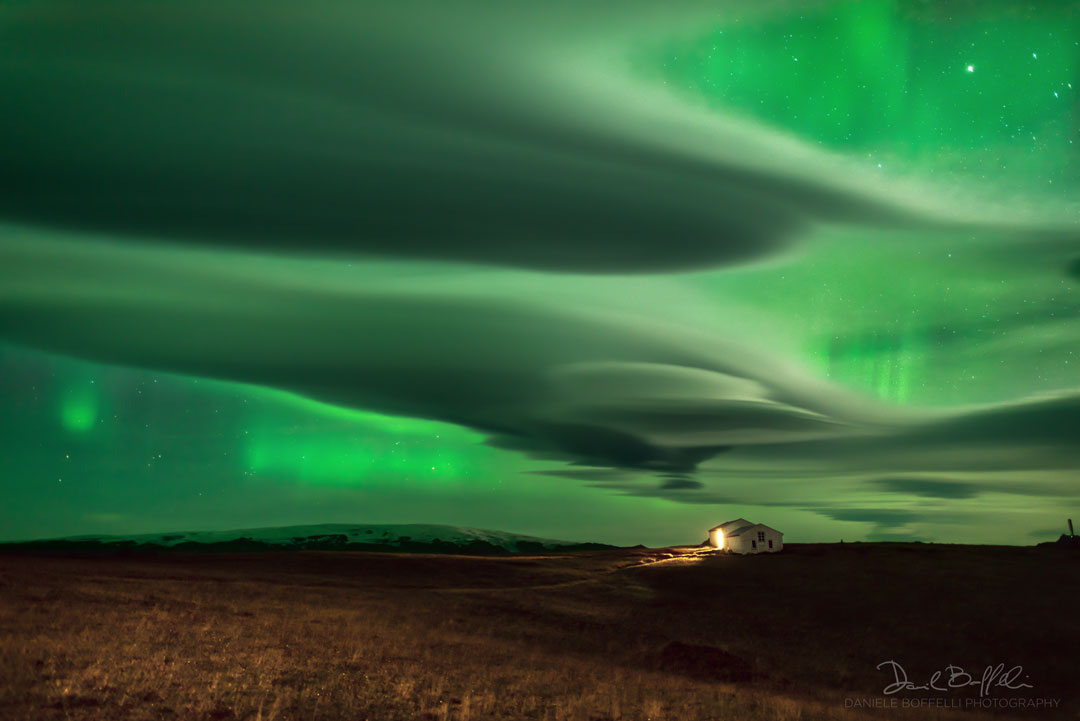2021年05月30日
Aurora over Clouds
Image Credit & Copyright: Daniele Boffelli
Explanation: Auroras usually occur high above the clouds. The auroral glow is created when fast-moving particles ejected from the Sun impact the Earth’s magnetosphere, from which charged particles spiral along the Earth’s magnetic field to strike atoms and molecules high in the Earth’s atmosphere. An oxygen atom, for example, will glow in the green light commonly emitted by an aurora after being energized by such a collision. The lowest part of an aurora will typically occur about 100 kilometers up, while most clouds exist only below about 10 kilometers. The relative heights of clouds and auroras are shown clearly in the featured picture in 2015 from Dyrholaey, Iceland. There, a determined astrophotographer withstood high winds and initially overcast skies in an attempt to capture aurora over a picturesque lighthouse, only to take, by chance, the featured picture including elongated lenticular clouds, along the way.
Follow APOD on Instagram in: English, Farsi, Indonesian, Persian, or Portuguese
Tomorrow’s picture: that’s a moon
云层上方的极光
影像提供与版权: Daniele Boffelli
说明: 极光通常出现在远高于云层之处。当太阳喷出的高速粒子冲撞地球磁层,这些带电粒子会沿地球磁场螺旋掉向地球,撞击高层地球大气里的原子与分子,产生美丽的极光。举例来说,氧原子受到撞击激发之后,就会发出常见的泛绿极光。极光的底部通常高于100公里,而大部分的云之高度不到10公里,在面这幅2015年摄于冰岛迪罗雷岬的主题影像里,云和极光的相对高度即清楚可辨。在这个拍照地点,想要拍摄美丽灯塔上空极光的天文摄影者,除了得顶住强风,还得忍受阴霾天空的干扰,才意外拍下这张外带荚状云的主题影像。
在Instagram上关注天文·每日一图(APOD): 英语、波斯语、印度尼西亚语、波斯语以及葡萄牙语
明日的图片: that’s a moon



